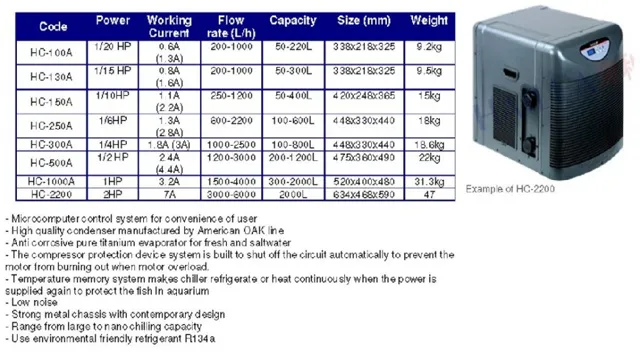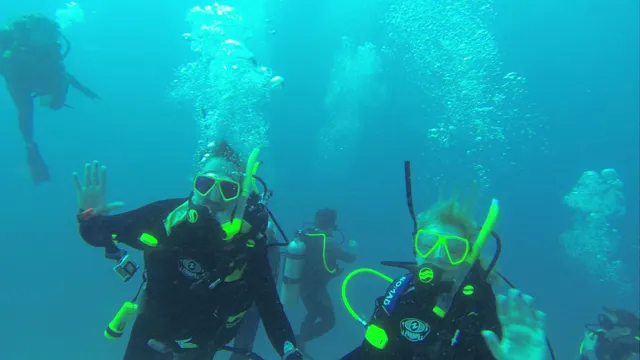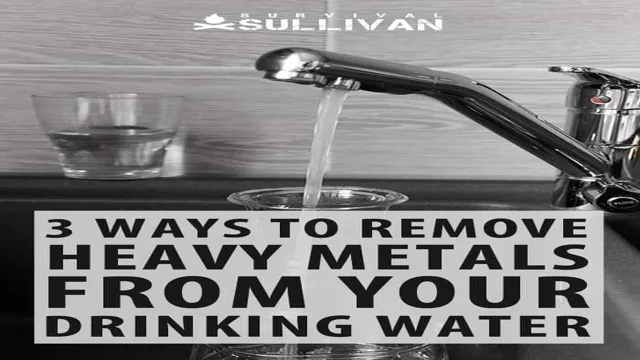If you’re a fish enthusiast and are looking to set up your own aquarium, you may have already encountered the issue of maintaining consistent water temperatures. Aquariums can quickly heat up, especially during the summer months, making it difficult for your fish to thrive. Fortunately, investing in a chiller can help regulate your aquarium’s temperature, keeping your fish healthy and happy.
But how do you ensure that you’re choosing the right chiller for your specific aquarium? In this article, we’ll take a closer look at correctly sizing a chiller for your aquarium so that you can be confident that your investment will work effectively for your needs.
Benefits of Proper Chiller Sizing
Proper chiller sizing is crucial when it comes to maintaining the optimal environment for your aquarium. When choosing a chiller, it’s important to ensure that it is the correct size for your tank. If it’s too small, it won’t be able to effectively regulate the temperature, leading to potential overheating.
On the other hand, if it’s too big, it will cycle on and off frequently, leading to inefficiency and unnecessary wear and tear on the equipment. When considering the size of the chiller, factors such as the volume of the tank, the desired temperature range, and ambient temperature must be taken into account. Measuring the heat load of your aquarium is also essential for accurately sizing the chiller.
Calculating this can be complex and often requires the assistance of a professional. However, investing in the correct size chiller means energy savings and a longer lifespan for the equipment. Choosing the right chiller can prevent costly damage to your aquatic life.
Overheating can lead to fish fighting for survival and plants struggling to thrive. An undersized chiller will not be able to maintain a consistent temperature, leading to dangerous fluctuations in the water as well as the build-up of harmful bacteria. An oversized chiller can also cause problems by creating an environment that is too cold for your aquatic life.
In conclusion, sizing your chiller correctly is crucial to ensure the safety and happiness of your aquatic pets. Taking the time to research and select the correct size for your tank, as well as seeking professional advice, can prevent issues like overheating and fluctuations in water temperature. Investing in a properly sized chiller will not only save energy, but also provide a comfortable and stable environment for your fish and plants, allowing you to enjoy your aquarium to the fullest.
Improved water quality
Proper chiller sizing has a significant impact on water quality, one of the most important considerations in any cooling system. When it comes to industrial processes, incorrect chiller sizes can result in inefficient cooling cycles which can lead to bacterial growth, algae formation, and other microbial growths. These growths can clog the system, reduce efficiency and cause damage to equipment.
On the other hand, choosing the right chiller size and configuration for your system can ensure that the water remains at an optimal temperature range which minimizes the potential for bacterial growth, ensuring a clean, healthy and stable system. This means a longer lifespan of your equipment and less downtime due to maintenance and repairs. By working with a knowledgeable chiller supplier, you can choose the perfect chiller size for your system, protecting your investment and improving water quality at the same time.

Increased energy efficiency
Proper chiller sizing is critical for optimizing energy efficiency and reducing electricity bills. When a chiller is too big for the space it needs to cool, it will cycle on and off more frequently, wasting energy and shortening its lifespan. Conversely, if a chiller is too small, it will struggle to keep up with cooling demands and work harder than is necessary to maintain the desired temperature, leading to increased wear and tear on the unit and higher energy consumption.
By selecting the right size chiller for your needs, you can ensure that it operates at peak efficiency, reducing energy costs and improving overall performance. With proper chiller sizing, you can ensure that your cooling system is working efficiently and effectively, keeping your space comfortable and your energy bills low. So, whether you are looking to install a new chiller or upgrade your current one, working with a professional to select the right size for your needs can help to provide long-term benefits for your business or facility.
Reduced risk of stress and illness in fish
Proper chiller sizing can have a significant impact on reducing the stress levels and risk of illness in fish. When it comes to aquatic species, it’s essential to maintain a consistent water temperature to replicate their natural habitat and ensure their overall wellbeing. If the chiller is too small for the aquarium, it can struggle to maintain the desired temperature, causing fluctuations that can not only cause fish stress, but also make them more susceptible to illness.
On the other hand, if the chiller is too large, it may cool the water too quickly, creating an unnatural environment that can also harm the fish. Therefore, choosing the right-sized chiller is crucial to maintain a stable aquatic environment suitable for your finned friends. Keeping that in mind, it’s always better to consult with an experienced professional who can help you choose the right chiller size based on your aquarium’s specific needs.
Factors to Consider When Sizing a Chiller
When it comes to choosing the correct chiller for your aquarium, there are several factors to consider. One of the most important factors to keep in mind is the size of your aquarium. Generally, a chiller is chosen based on the volume of water it needs to cool. (See Also: How to Get an Aquarium’s Bacteria Built Up: Tips and Tricks)
A larger aquarium will require a larger chiller, while a smaller aquarium can be adequately cooled with a smaller chiller. Another factor to consider is the temperature of your aquarium’s environment. If the room where your aquarium is located is particularly warm, a larger chiller may be needed to ensure that the aquarium remains at the appropriate temperature.
Additionally, the type of fish or marine life in your aquarium may also impact your chiller needs. Certain fish and marine life require specific water temperatures to thrive, so it’s important to match the chiller to their needs. Correctly sizing a chiller to your aquarium should result in a healthy and thriving aquatic environment.
Size and capacity of your aquarium
When it comes to sizing a chiller for your aquarium, there are a few factors to consider to ensure that your aquatic pets are living in a comfortable and healthy environment. The size and capacity of your aquarium is one of the most important factors to take into account. As a general rule of thumb, you should have a chiller that can handle at least 10% of your aquarium’s total volume.
For example, if you have a 100-gallon aquarium, you should have a chiller with a capacity of at least 10 gallons per hour. However, you should also consider the type of fish and other aquatic animals that you have in your aquarium, as some species require cooler water temperatures than others. Additionally, if you live in a warmer climate, you may need a more powerful chiller to keep your aquarium at a consistent temperature.
By taking these factors into account, you can ensure that your aquarium is sized appropriately for your chiller, providing a comfortable and healthy environment for your aquatic pets to thrive in.
Temperature requirements of your livestock
As a livestock owner, it’s essential to provide your animals with an environment that promotes their health and wellbeing, which includes maintaining the appropriate temperature levels. Sizing a chiller for your livestock requires careful consideration of several factors. Firstly, you need to consider the number of animals on your farm and their weight because this will determine the amount of heat generated by their bodies.
Secondly, you should factor in the environmental temperature, your farm’s insulation, and the level of ventilation required. Thirdly, you need to consider the cooling capacity of your chiller, which is measured in BTU/h and can vary depending on the type and size of the chiller. Lastly, you should think about energy efficiency and the cost of running the chiller because overusing it can lead to high energy bills.
Overall, make sure to consult an experienced professional to help you find a properly sized chiller that meets the temperature requirements of your livestock and budget.
Room temperature and ambient heat load
When sizing a chiller, two important factors to consider are room temperature and ambient heat load. Room temperature refers to the temperature of the space where the chiller will be installed. A cooler room will require less cooling power, while a warmer room will require more.
It’s important to also consider the ambient heat load of the room which encompasses the heat generated from other sources such as lighting fixtures, electronic devices, and human activity. These factors can significantly raise the room temperature and increase the chiller’s cooling load. It’s essential to accurately assess both room temperature and ambient heat load to ensure that the chiller’s capacity is properly matched to the cooling requirements of the space.
Failing to do so could result in a chiller that is either undersized, resulting in inefficient cooling, or oversized, leading to unnecessary energy consumption and higher costs. Therefore, it’s crucial to work with a trusted HVAC professional who can accurately assess the environment and provide expert guidance on selecting the right chiller for your specific needs.
Types of chillers available
When it comes to choosing the right chiller for your needs, there are a few key factors to consider. One of the most important is the size of the chiller. This will depend on a number of factors, including the size of your space, the temperature requirements for your equipment, and the amount of heat generated by your equipment.
You’ll also want to consider the type of chiller you need. There are several different types available, including air-cooled, water-cooled, and evaporative. Each has its own set of advantages and disadvantages, so it’s important to choose the one that best fits your specific needs. (See Also: How to Make Brackish Aquarium Water: A Step-by-Step Guide)
Another important factor to consider is efficiency. The more efficient your chiller is, the less energy it will use and the lower your operating costs will be. Other important considerations include noise levels, maintenance requirements, and the overall cost of the unit.
By taking the time to carefully consider these factors, you can choose the right chiller to keep your equipment running smoothly and efficiently.
Determining the Proper Size of Your Chiller
When setting up an aquarium, one key component to consider is the chiller. It’s essential to properly size the chiller to your aquarium, or else it won’t be able to effectively cool the water. The appropriate chiller size is determined by the volume of water in your tank, measured in gallons, and the temperature difference between the desired tank temperature and the average room temperature.
You also need to factor in the heat generated by your aquarium equipment, such as lighting and filtration. Oversizing your chiller can lead to increased energy consumption and a higher upfront cost, while undersizing can cause the chiller to run continuously, leading to premature wear and tear. So, it’s essential to calculate the correct chiller size for your aquarium to keep your aquatic friends healthy and happy.
Calculate the total volume of your aquarium
One of the most important steps in determining the proper size of your aquarium chiller is calculating the total volume of your aquarium. This will give you an accurate idea of the amount of heat your aquarium produces and the size chiller you need to keep your aquatic pets healthy. To calculate your aquarium’s volume, you need to measure the length, width, and height of your tank in inches and then multiply those measurements together.
Next, divide that value by 231, which is the number of cubic inches in a gallon. This will give you the total volume of your aquarium in gallons. The proper size of your aquarium chiller depends on the total volume of your aquarium, so it is important to calculate it accurately.
By taking the time to determine the proper size of your chiller, you can ensure that your aquatic pets thrive in their environment.
Determine the temperature difference needed
Determining the proper size of your chiller can be crucial to the success of your operation. One important factor to consider is the temperature difference needed. This is the difference between the temperature of the fluid to be cooled and the temperature of the coolant.
To determine this, it’s important to consider the application of the chiller and the specifications of the equipment being used. In many cases, a temperature difference of 10-15 degrees Fahrenheit is adequate for most commercial chiller applications. However, in some cases, a smaller or larger temperature difference may be necessary.
It’s always best to consult with a professional to determine the specific temperature difference needed for your chiller to ensure optimal performance and efficiency. By taking the time to properly determine the size and specifications of your chiller, you can optimize your system for the best possible results and avoid costly mistakes down the road.
Calculate the required cooling capacity of your chiller
Determining the proper size of your chiller is crucial in ensuring that your cooling equipment functions optimally. One of the key factors to consider when determining the cooling capacity of your chiller is the amount of heat that needs to be removed from the process. In order to calculate this, you need to determine the BTUs (British Thermal Units) required for your specific application.
This can be done by taking into account the size of the space, the type of process, the volume of the material being cooled, and other environmental factors. Once you have determined the required BTUs, you can select a chiller with a cooling capacity that meets or exceeds this requirement. This will ensure that your chiller can manage the process heat load effectively, preventing any overheating or damage to the equipment. (See Also: How to Make a Self Sustained Aquarium: Your Guide to Creating an Eco-Friendly Underwater Ecosystem)
Remember, selecting the right size for your chiller is essential to achieve proper cooling and prolong the life of your equipment.
Conclusion
In conclusion, sizing a chiller for your aquarium is like finding the perfect swimsuit – it needs to be the right fit for optimal performance, but also comfortable and stylish. Just like you wouldn’t want a tight, uncomfortable swimsuit, an oversized chiller will waste energy and be inefficient. On the other hand, selecting a chiller too small for your tank will leave your aquatic friends feeling like they’re in a hot tub instead of a cool, comfortable ocean.
Finding the right chiller size for your aquarium means happy, healthy fish and a cool, calm tank – the ultimate key to aquatic success. So, take the time to measure your tank and do your research – your finned friends will thank you for it!”
FAQs
What factors determine the correct size of a chiller for my aquarium?
The size of your aquarium, the ambient room temperature, and the types of fish and equipment you have in your aquarium are all factors that determine the size of chiller you will need.
How do I calculate the appropriate size of chiller for my aquarium?
The general rule of thumb is to have a chiller that is able to handle at least 3-5 times the volume of your aquarium. For example, if you have a 100-gallon aquarium, you will need a chiller that can handle at least 300-500 gallons of water.
How does the ambient room temperature affect the size of chiller needed for my aquarium?
The warmer the room temperature is, the larger the chiller you will need as it will need to work harder to cool down the water in your aquarium. Additionally, if the room temperature tends to fluctuate, you may need a more powerful chiller to ensure a consistent water temperature.
Can the types of fish I have in my aquarium affect the size of chiller needed?
Yes, certain types of fish, such as those that require colder water temperatures, may require a larger chiller to maintain their ideal water temperature. On the other hand, if you have warm-water fish in your aquarium, you may require a smaller chiller.
What about the equipment I have in my aquarium, can that affect the size of chiller needed?
Yes, certain equipment, such as powerful lights or pumps, can generate heat that can raise the temperature of your aquarium water. If you have a lot of equipment that generates heat, you may need a larger chiller to offset this heat and maintain a consistent water temperature.
Can I install a smaller chiller and just run it more often to reach the desired temperature?
While it is technically possible to do this, it is not recommended as it can put undue strain on your chiller and potentially shorten its lifespan. It is always better to invest in a chiller that is appropriately sized for your aquarium.
Are there any other considerations I should keep in mind when sizing a chiller for my aquarium?
Yes, it is important to research and choose a chiller that is not only appropriately sized but also of good quality and reliable. Additionally, be sure to factor in the cost of operation and maintenance when selecting a chiller.







